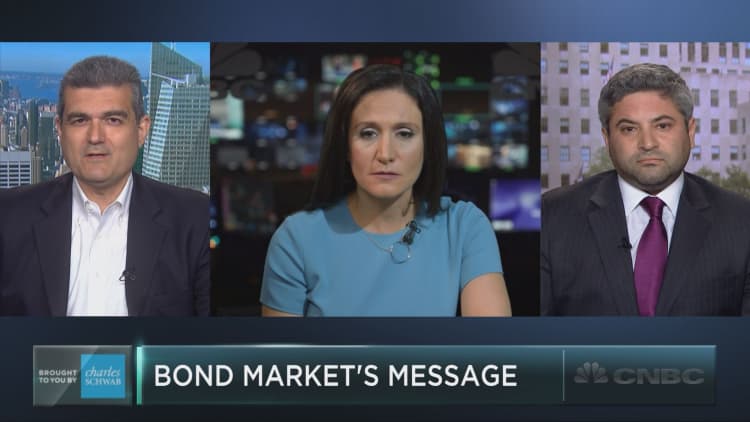A bubble may be forming in a number of sovereign debt markets but investors can easily cope with concerns over it popping, according to analysts at Bank of New York Mellon.
"It's impossible to forecast exactly when bubbles pop, the best anyone can do is to trade with the knowledge that this is happening in the background," Simon Derrick, chief currency strategist at BNY Mellon, told CNBC via email on Tuesday.
The evidence is starting to point towards something that looks like a bubble forming, according to Derrick. Although he steers shy of the exact definition of a bubble if, as some suggest, investors are being effectively forced into a trade due to low rates and bond-buying programs from central banks around the world.

Government bonds with negative yields have grown to over $11 trillion, according to Fitch Ratings, with yields having an inverse relationship to their prices. This is on the back of asset purchases by the likes of the European Central Bank, the Bank of Japan and the Bank of England. Sovereign bonds are seen as a safe haven in times of concern but the price surge has coincided with the asset purchasing from the central banks.
Investors are now effectively paying for the privilege of holding debt from some euro zone governments, including Italy which is entering into a period of political volatility this fall with an upcoming referendum on its constitution. Derrick highlights that investors are soaking up the debt of a country that has a debt to GDP (gross domestic product) ratio of 132.7 percent in 2015, not to mention the growing popularity of the political opposition in the country.
But investors should focus on the potential reaction, according to BNY Mellon. The Fed will reluctantly raise rates this year, the U.S. election could have a significant impact on the dollar, the Bank of England will likely cut rates again and the Bank of Japan will continue to try to defend its currency, BNY Mellon predict.
"It is ... a fool's game to try and predict when a bubble will burst or how far it will travel beforehand. The best that we can therefore do is to look for signs of the bubble bursting and to determine how central banks will likely react," he added in a research note on Tuesday morning.
Instead, the real risk comes from the fact that neither the huge range of political issues facing Europe in October nor the U.S. presidential election will deflect the market from its search for yield, according to Derrick.
"Even intervention by the Japanese might only provide temporary relief from the low volatility environment that appears to result from this type of 'forced' reaching for yield. However, this also indicates that when the bubble (if it is a bubble) in the bond markets finally pops then the volatility that results in the currency markets (indeed, in almost all markets) should prove substantial," he said in the note.
"Timing therefore appears to be the key issue in the months ahead."


